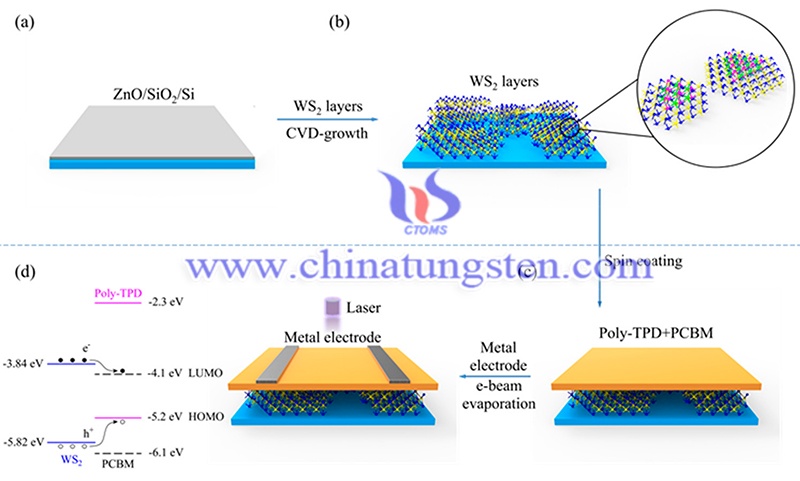2D WS2 and MoS2 Materials for Controlling Light
- Details
- Category: Tungsten's News
- Published on Sunday, 17 January 2021 17:31
Tungsten disulfide (WS2) and molybdenum disulfide (MoS2) 2D materials applied in controlling light and could provide high efficiency. Since the invention of the world’s first laser, the ruby laser, in 1960, humans’ desire to control light has spread to various industries, including telecommunications, medicine, GPS, optical sensors and optical computers. Recently, the POSTECH research team has taken a step toward the goal of controlling light by identifying nonlinear optical phenomena that occur in heterobilayers composed of two-dimensional materials.
The nonlinear optical phenomenon refers to the appearance of light whose intensity is not doubled when the light input intensity is doubled, where the frequency of the resulting output is different from the frequency of the original input. It is easy to understand this phenomenon if you think of electrons and nuclei as oscillators connected by a spring. When the spring is moved at a constant cycle, light is generated by the oscillation of electrons and nuclei. If the spring-pulling force is small, only light with the same frequency as the applied external force is formed, but when a strong force is applied, light with multiple frequencies is generated.

Among them, light with twice the input frequency is called the secondary harmonic generation (SHG). The secondary harmonic phenomenon may occur in materials at asymmetric points. Recently, it has been found that 2D semiconductor crystals, such as molybdenum disulfide (MoS2) and tungsten disulfide (WS2), are highly efficient for controlling light.
The research team led by Professor Sunmin Ryu and Professor Wontaek Kim of the MS/Ph Integration Program of the Department of Chemistry of POSTECH pointed out that the secondary harmonic wave produced by a heterobilayer material (MoS2 or WS2) could not be explained by the existing model, and confirmed that it was caused by the SHG interference with different phases.
The team predicted the SHG phase difference by showing the polarization spectra of the heterogeneous layer of elliptically polarized SHG light. The phase difference directly measured by the second harmonic interferometer is consistent in quantity with the result obtained by the polarization spectroscopy, which proves their hypothesis. In addition, DFT calculations can support these results.
So far, SHG research on 2D materials is mainly limited to strength, but this is the first measurement of the SHG phase and shows that there is a difference in the SHG phase between the two materials. Research shows the possibility of controlling the SHG phase.
Professor Sunmin Ryu who led the study said, "This study not only broadened our understanding of nonlinear optical phenomena of 2D materials, but also opened new possibilities for nonlinear spectroscopic control methods." He concluded, "The research results are expected to greatly contribute to the control of nonlinear optical phenomena by using 2D WS2 and MoS2 materials to produce new photons with twice the frequency of vibration and controlled phase." The article has been published in the latest issue of the prestigious international journal Nano Letters.
Due to the fascinating optical, electronic, and mechanical properties, tungsten disulfide is also used as the material of semiconductors. 2D semiconductor WS2 attracts significant interest in both fundamental physics and many promising applications such as light emitters, photodetectors/sensors, valleytronics, and flexible.
- Tungsten Manufacturer & Supplier, Chinatungsten Online: www.chinatungsten.com
- Tungsten News & Prices of China Tungsten Industry Association: www.ctia.com.cn
- Molybdenum News & Price: news.molybdenum.com.cn
- Tel.: 86 592 5129696; Fax: 86 592 5129797; Email: sales@chinatungsten.com



 sales@chinatungsten.com
sales@chinatungsten.com